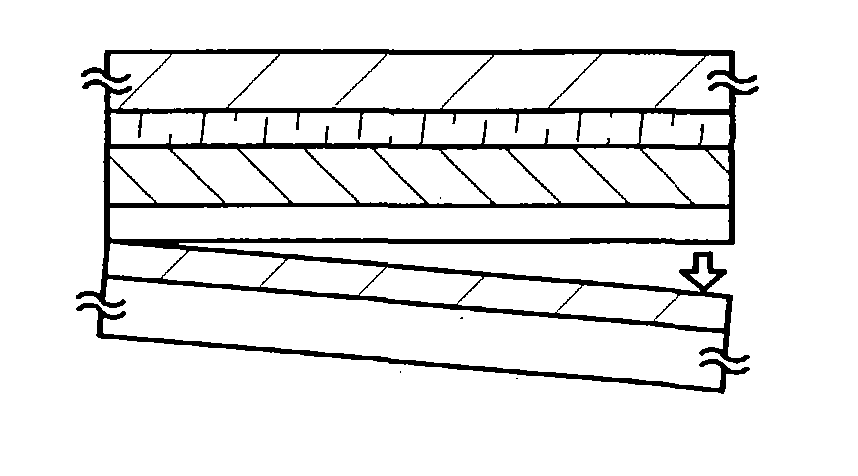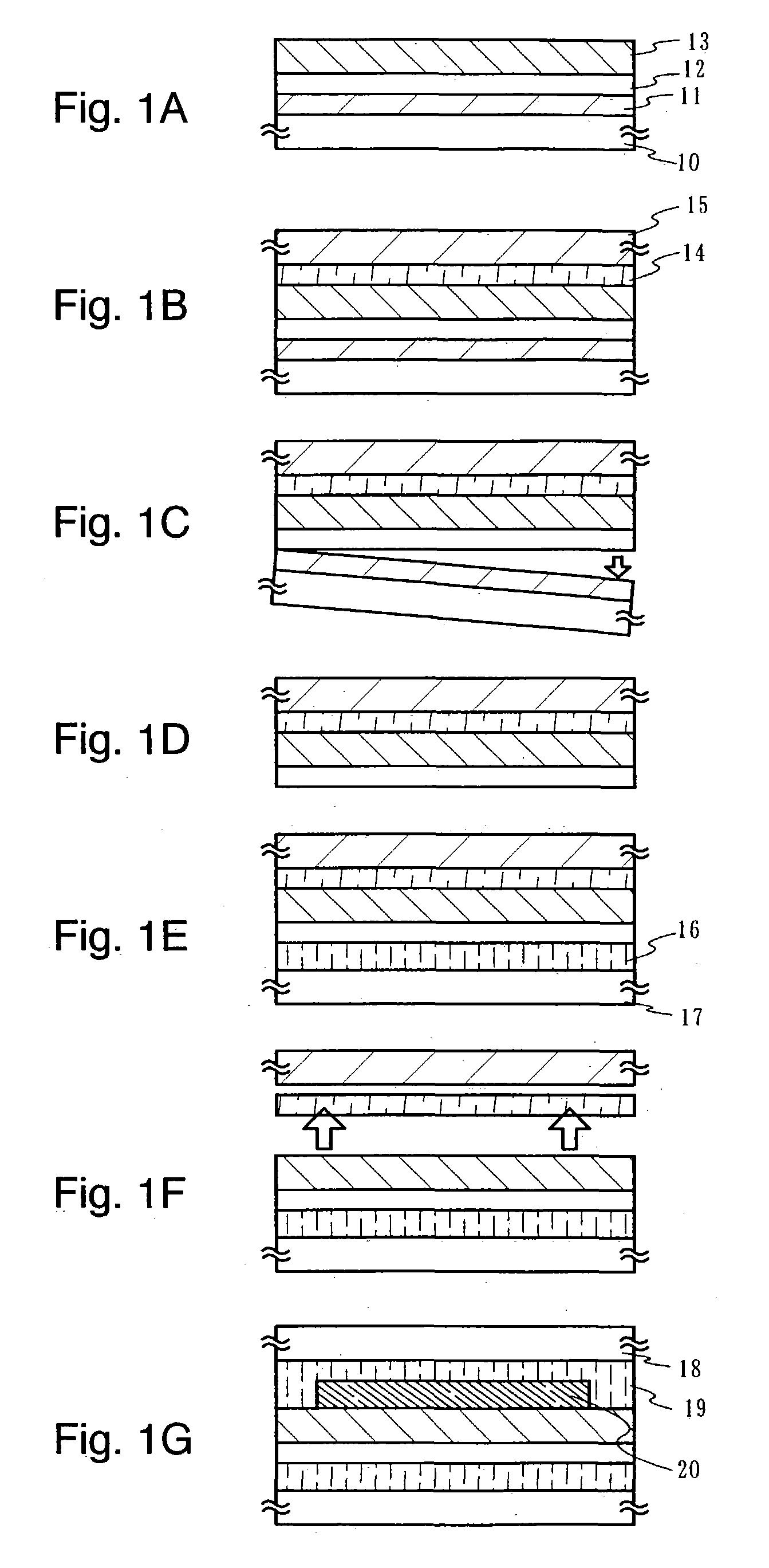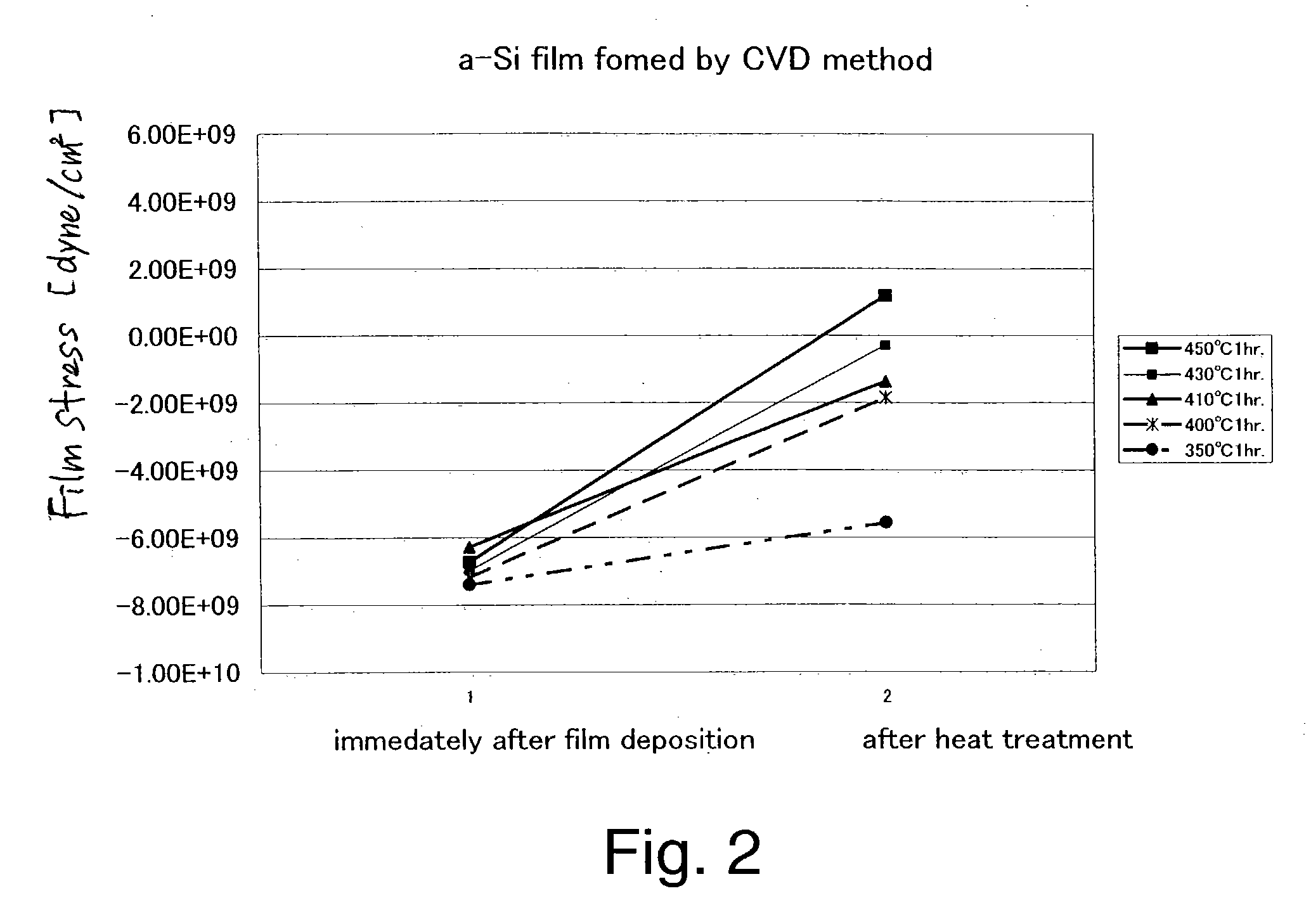Peeling method
a layering and layering technology, applied in the direction of semiconductor devices, electrical apparatus, transistors, etc., can solve the problems of difficult and heavy cracking, inability to form any tft with electric characteristics, glass substrates, quartz substrates and the like,
- Summary
- Abstract
- Description
- Claims
- Application Information
AI Technical Summary
Benefits of technology
Problems solved by technology
Method used
Image
Examples
embodiment 1
[0100] Embodiments of the present invention will be described with FIGS. 4A to 6. Here, a method of simultaneously manufacturing TFTs (n-channel TFTs and a p-channel TFT) for a pixel portion, and for a driving circuit provided in the periphery of the pixel portion on the same substrate will be described in detail using. Although shown here is an example of manufacturing an active matrix substrate to manufacture a reflective liquid crystal display device, there is no limitation putted thereon. If, appropriately change the arrangement of TFTs and the materials of pixel electrodes, needless to say that it is possible to manufacture either a transmissive liquid crystal display device or a light emitting device having a light emitting layer containing an organic compound.
[0101] A glass substrate is used as a substrate. First, a silicon oxynitride layer is formed of 50 nm thick on the substrate using a PCVD method.
[0102] Subsequently, using sputtering to form a tungsten layer of 50 nm thi...
embodiment 2
[0153] Embodiment 1 shows an example of a reflective display device in which a pixel electrode is formed from a reflective metal material. Shown in this embodiment is an example of transmissive display device in which a pixel electrode is formed from a light-transmitting conductive film.
[0154] The fabricate processes up through the step of forming an interlayer insulating film are identical with the processes of Embodiment 1, and the description thereof is omitted here. After the interlayer insulating film is formed in accordance with Embodiment 1, a pixel electrode 601 is formed from a light-transmitting conductive film. Examples of the light-transmitting conductive film include an ITO (indium tin oxide alloy) film, an indium oxide-zinc oxide alloy (In.sub.2O.sub.3--ZnO) film, a zinc oxide (ZnO) film, and the like.
[0155] Thereafter, contact holes are formed in an interlayer insulating film 600. A connection electrode 602 overlapping the pixel electrode is formed next. The connectio...
embodiment 3
[0158] An example for fabricating a light emitting device that has a light emitting element including an organic compound layer as a light emitting layer, which formed on a plastic substrate will be described in this embodiment with reference to FIG. 8.
[0159] FIG. 8A is a top surface view of a light emitting device and FIG. 8B is a cross-sectional view of Fig, 8A taken along the line A-A'. A dotted line 1101 is a source signal line driving circuit, 1102 is a pixel portion, and 1103 is a gate signal line driving circuit. Reference numeral 1104 is an enclosing substrate and 1105 is a sealing agent. Inside enclosed by the first sealing agent 1105 is filled with a second transparent sealant 1107. The second sealant 1107 is exposed at four corners.
[0160] Reference numeral 1108 is a source signal line driving circuit and a wiring for transmitting signals inputted to the gate signal line driving circuit 1103, and receives a video signal and a clock signal from FPC 1109 as an external input...
PUM
 Login to View More
Login to View More Abstract
Description
Claims
Application Information
 Login to View More
Login to View More - R&D
- Intellectual Property
- Life Sciences
- Materials
- Tech Scout
- Unparalleled Data Quality
- Higher Quality Content
- 60% Fewer Hallucinations
Browse by: Latest US Patents, China's latest patents, Technical Efficacy Thesaurus, Application Domain, Technology Topic, Popular Technical Reports.
© 2025 PatSnap. All rights reserved.Legal|Privacy policy|Modern Slavery Act Transparency Statement|Sitemap|About US| Contact US: help@patsnap.com



